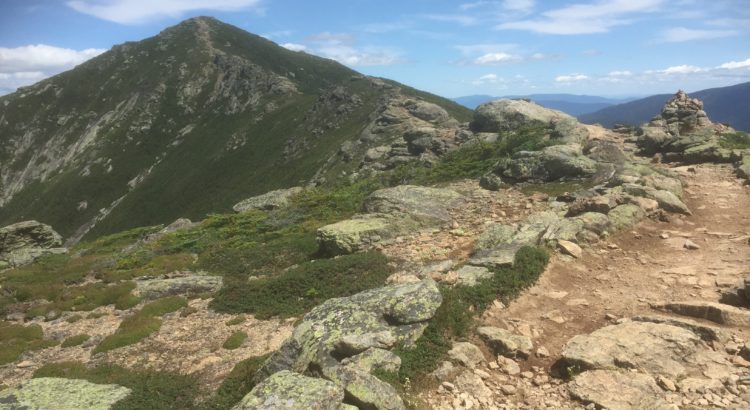By: Kate Seader, Interpretive Ranger at Franconia Notch State Park
One Saturday in July, I was wrapping up my morning shift in the Hiker Information Cabin at Franconia Notch State Park. When I looked down at my clicker, I was surprised to see that I had talked to more than 200 hikers that morning. From families with young children to people going solo, from new hikers breaking in boots for the first time to the experienced trying to get one last summit out of their current pair, so many different faces and stories had come through the doors. But they all had one thing in common: their need to go out and explore Franconia Notch through its trails.
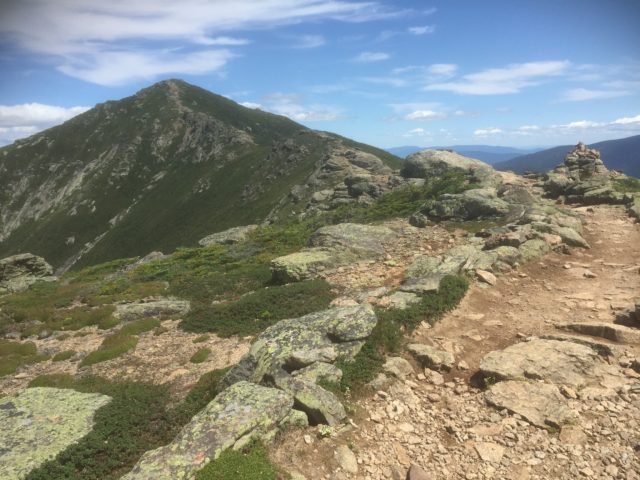
A network of trails is the foundation of most parks, but trails can be some of the hardest parts of the park to manage, build, and maintain.
How does one keep a dirt trail from washing away in the rain?
How can we keep visitors from putting themselves at risk for photos?
How can we make people care about the wilderness without putting a trail through it?
How can we best inform people about the importance of staying on trail?
A lot of these questions don’t have one right answer.
When trails are built and maintained, they must balance on what some refer to as “the three-legged stool.” The more sensitive the environment, the more popular the feature; the more risky the path, the harder it is to keep that balance. Conservation, accessibility, and safety each make up a leg of the stool. If the legs are uneven, the platform is unbalanced and may collapse altogether. Let’s explore the challenges of each of these categories.
When I think about trails the first leg that comes to mind is accessibility. Trails show us sites and take us places to which we otherwise wouldn’t get to go. Few people have the navigational skills to make it to the top of Mt. Lafayette without a trail to follow. There are stairs and ladders on the trails that give easy ascents to those who don’t have the ability to climb a steep hill or rock face.
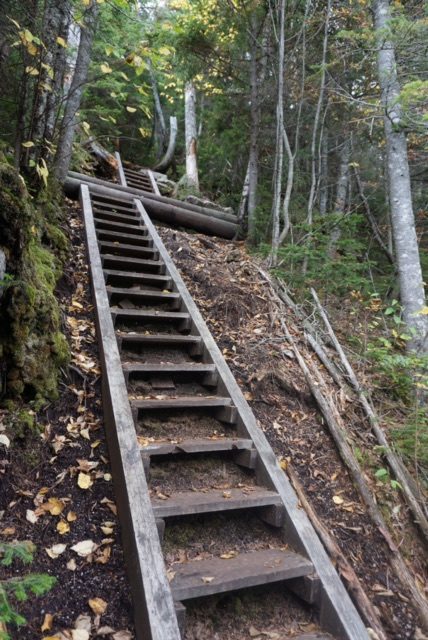
Franconia Notch has a paved multi-use bike path that runs 8.8 miles through the park. Offering opportunities to explore for those who use a wheelchair or other mobility device. Additionally, the Cannon Mountain Aerial Tramway makes the peak accessible to people that wouldn’t be able to climb it on foot.
The second leg, safety, is of the utmost importance; while all hiking carries some risk, trails are designed and maintained to reduce that risk. When following a trail, I look for signposts, blazes (color-coded stripes of paint on trees or rocks), and cairns (piles of stones along a ridgeline). Trail workers and volunteers made these to guide hikers to stay on the trail and thereby avoid getting lost or injured. Trees in danger of falling are cut, loose rocks removed, and railings built when the trail gets a little too close to the edge.
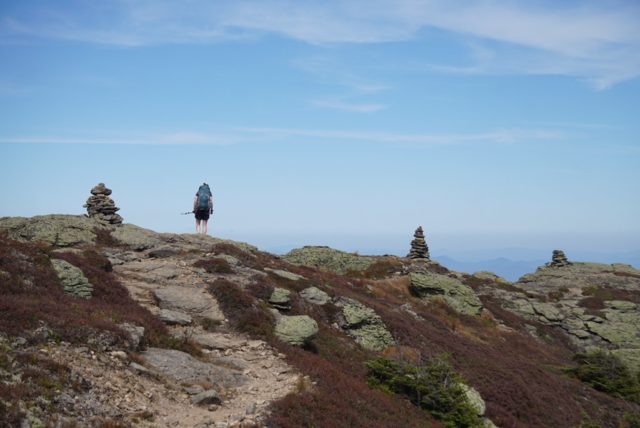
Conservation tends to be the leg of the stool that takes the most balancing. Anytime we create a trail, we are altering the environment that we want to observe and protect. However, by creating a trail, we can help people to better immerse themselves in nature, encouraging stronger connections to the natural world around them and inspiring earth stewardship in all aspects of life. There are also the physical conservation aspects to consider when building trails: erosion, runoff, waste removal, and exposure of wildlife to humans. Trail stewards work hard to minimize these impacts and keep the trails sustainable for years to come, but they can only do so much; the most drastic impact on trails comes from us, the visitors.
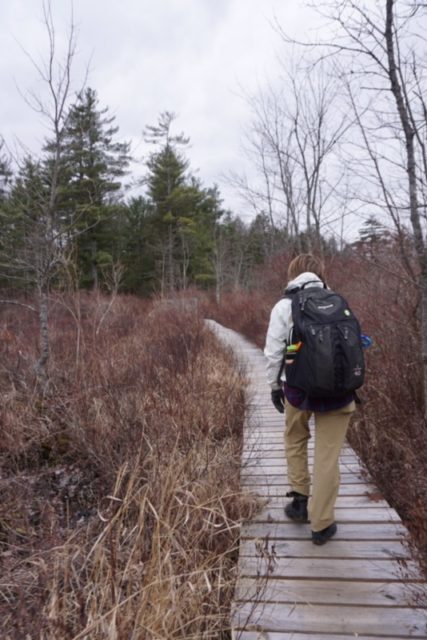
Trails allow us sustainable access into wild places; it is our job as users of those trails to ensure that the wild places remain intact and that they are here for many seasons to come. We can lessen our impacts on trails with one key action: staying on the trail.
A person might go off-trail to make a shortcut or get closer to a point of interest, such as a waterfall or cliff; but even with the best of intentions, these actions contribute to erosion. Trails are made to the multitude of feet going over them; the habitat around the trail is not. When too many people follow the same path off-trail, it creates a social trail. These can be confusing and cause people to unintentionally go off-trail or get lost. Wetlands, riverbanks, and alpine zones are particularly sensitive habitats; by staying on the trails, we ensure that they are protected for all of us to enjoy for years to come.
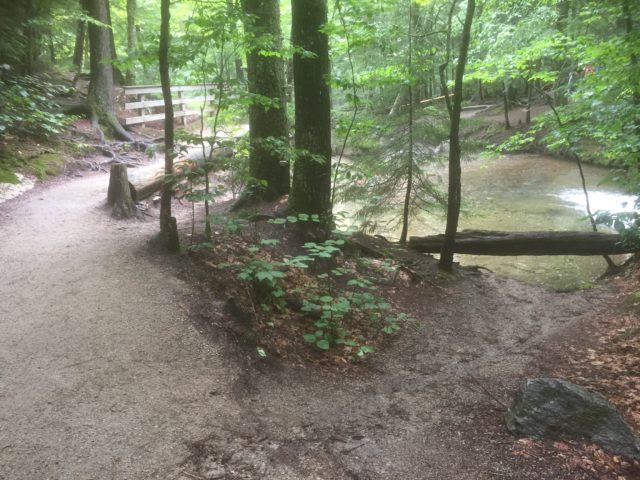
If you’d like to more tips on how to lessen your impact while outdoors, check out the Leave No Trace Project. If you’d like to help out with local trails, look into volunteering as a trail steward through the Nature Conservancy, the Appalachian Mountain Club, the National Forest Service, or local volunteer projects.

